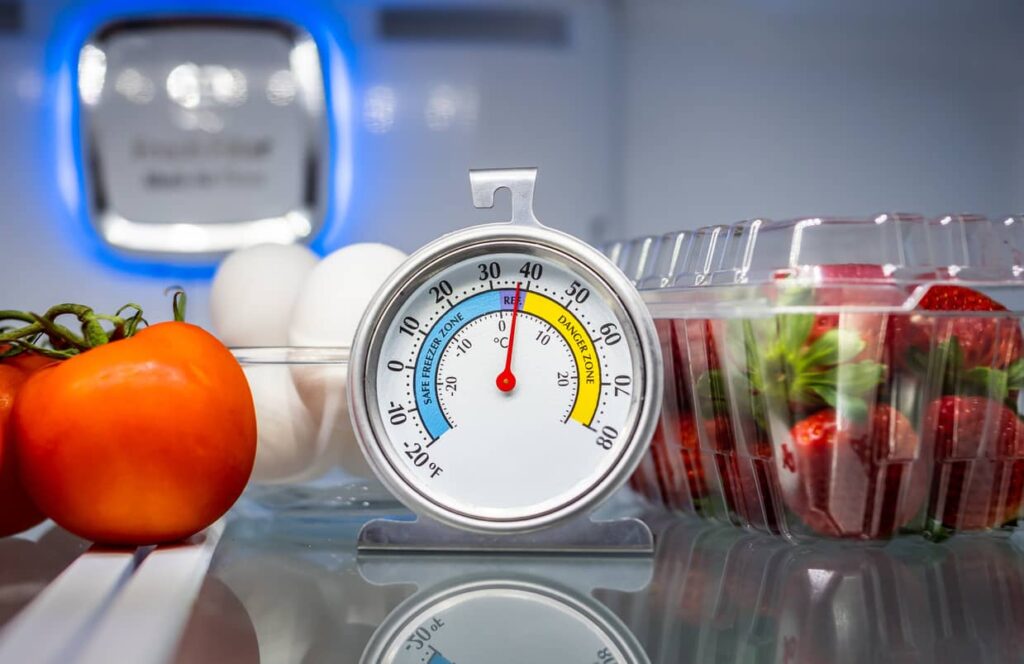Understanding Refrigerator Cooling Time
When a refrigerator is first plugged in, it does not immediately reach its optimal cooling temperature. The cooling time can vary significantly based on several factors, including the type of refrigerator, its size, the ambient temperature, and how it is loaded.
Average Cooling Times
On average, the cooling time for a refrigerator can range from 2 to 24 hours depending on its type and brand. Here’s a breakdown of typical cooling times:
- Full-size refrigerators: Generally take about 12 hours to cool down to the FDA-recommended temperature of 40°F (4°C).
- Mini-fridges: Typically cool faster, often within 4 hours.
- Older refrigerators: May take longer due to wear and tear, potentially ranging from 12 to 24 hours.
Factors Influencing Cooling Time
Several factors can affect how long it takes for a refrigerator to reach the desired temperature:
- Size and Type: Larger refrigerators usually take longer to cool than smaller units.
- Room Temperature: The ambient temperature where the refrigerator is located plays a significant role. A fridge in a warm environment will take longer to cool.
- Initial Temperature: If the refrigerator was stored in a warm place before installation, it will take longer to cool down.
- Age and Condition: Older units or those with damaged components may not cool as efficiently.
- Load: A refrigerator that is fully stocked will take longer to cool down than one that is empty. Conversely, a well-stocked fridge maintains its temperature better once it has cooled.
- Door Openings: Frequent opening of the refrigerator door allows warm air to enter, prolonging the cooling process.
How Long Does It Take for Different Refrigerator Types to Cool?
Full-Size Refrigerators
Full-size refrigerators are the most common type found in households. They usually take between 6 to 12 hours to reach the optimal cooling temperature.
Mini-Fridges
Mini-fridges are designed for quick cooling and can often reach a safe temperature in about 4 hours. This makes them ideal for short-term use or for keeping drinks and snacks cool.
Side-by-Side Refrigerators
These refrigerators typically take longer to cool, ranging from 12 to 24 hours. The design can affect air circulation and cooling efficiency.
French Door Refrigerators
French door models also take about 12 to 24 hours to cool down. Their spacious design can lead to longer cooling times, especially if they are fully stocked.
Top-Freezer Refrigerators
Top-freezer models usually cool down in a similar timeframe to full-size refrigerators, taking about 6 to 12 hours.
Factors Affecting Cooling Times by Type
| Refrigerator Type | Average Cooling Time | Notes |
|---|---|---|
| Full-Size | 6-12 hours | Common household type |
| Mini-Fridge | 4 hours | Quick cooling, ideal for short-term use |
| Side-by-Side | 12-24 hours | Design affects air circulation |
| French Door | 12-24 hours | Spacious design can prolong cooling time |
| Top-Freezer | 6-12 hours | Similar to full-size refrigerators |
Tips to Speed Up the Cooling Process
To help your refrigerator cool down faster, consider the following tips:
- Keep the Door Closed: Minimize door openings to prevent warm air from entering.
- Allow for Airflow: Ensure that there is enough space around the refrigerator for air to circulate. It should be positioned a few inches away from walls.
- Clean the Coils: Dusty or dirty condenser coils can slow down the cooling process. Regularly clean them to ensure efficient operation.
- Avoid Overloading: When first using the refrigerator, avoid stocking it with too much food. A well-stocked fridge can maintain temperature better once cooled.
- Use Ice Packs: Placing ice packs inside can help lower the temperature faster during the initial cooling period.
- Set the Right Temperature: Ensure the temperature control is set to a lower level for quicker cooling.
- Wait After Moving: If you’ve just moved your refrigerator, allow it to sit for a few hours before plugging it in. This helps the refrigerant settle.
How to Know When Your Refrigerator Is Cold Enough
To ensure your refrigerator is at the correct temperature for food safety, it should be at or below 40°F (4°C). You can check the temperature using:
- Fridge Thermometer: Place a thermometer inside the fridge to monitor the temperature accurately.
- Built-in Temperature Display: Some modern refrigerators come with a digital display that shows the internal temperature.
Common Issues and Troubleshooting
If your refrigerator is not cooling properly, consider the following troubleshooting steps:
- Check the Power Supply: Ensure that the refrigerator is plugged in and that the outlet is functioning.
- Inspect the Door Seal: A damaged door seal can cause cold air to escape, making it harder for the fridge to cool.
- Clean the Condenser Coils: Dirty coils can hinder cooling efficiency. Regular cleaning is essential.
- Examine the Thermostat: If the thermostat is malfunctioning, it may need to be replaced.
- Look for Blocked Vents: Ensure that air vents inside the fridge are not blocked by food items.
- Call a Professional: If issues persist, it may be time to consult a technician for repairs.
FAQ Section
Q1: How long does it take for a new refrigerator to cool down?
Typically, a new refrigerator takes about 12 hours to cool down to the recommended temperature of 40°F (4°C).
Q2: Why does my refrigerator take longer to cool?
Several factors can affect cooling time, including room temperature, initial food temperature, and the refrigerator’s age and condition.
Q3: Can I speed up the cooling process?
Yes, keeping the door closed, cleaning the coils, and avoiding overloading the fridge can help speed up the cooling process.
Q4: What temperature should my refrigerator be set to?
The FDA recommends that refrigerators be set to 40°F (4°C) or lower for safe food storage.
Q5: How can I tell if my refrigerator is cooling properly?
Use a fridge thermometer to check the internal temperature. It should be at or below 40°F (4°C).
Q6: What should I do if my refrigerator isn’t cooling?
Check for power supply issues, inspect the door seal, clean the condenser coils, and ensure vents are not blocked.
Q7: How does ambient temperature affect cooling time?
If the refrigerator is placed in a warm environment, it will take longer to cool down compared to one in a cooler area.
Q8: Is it normal for a refrigerator to take a long time to cool after moving?
Yes, it can take longer for a refrigerator to cool after being moved, especially if it was not allowed to settle before being plugged in.
Conclusion
Understanding how long it takes for a refrigerator to get cold is crucial for effective food storage and appliance management. Cooling times can vary based on several factors, including the type of refrigerator, its size, and the environment in which it is placed. By following the tips provided, you can ensure that your refrigerator cools efficiently and maintains the proper temperature for food safety.For more detailed information on refrigerator cooling and management, you can refer to the Wikipedia page on Refrigerators.This comprehensive guide provides insights into refrigerator cooling times, factors influencing those times, and practical tips for ensuring your appliance functions effectively.



